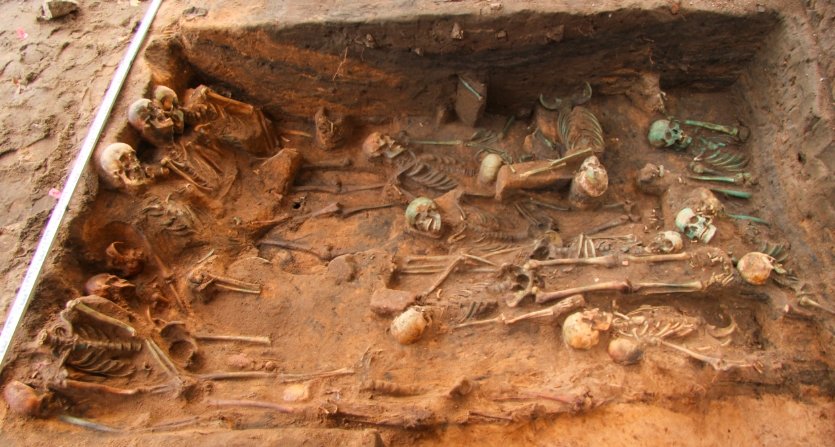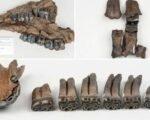In a chilling discovery in Ecuador, archaeologists have uncovered the remains of a young, pregnant woman who was brutally sacrificed more than 1,200 years ago. The burial, found in Buen Suceso, sheds light on the potential practice of human sacrifice during the Manteño period (771 to 953 C.E.), an era largely known for its complex social and religious structures. While human sacrifices were rare in the Manteño culture, the circumstances surrounding this particular burial suggest that the woman’s death may have been tied to ritualistic beliefs, possibly linked to the devastating effects of El Niño events.
The Discovery: A Gruesome Ritual Offering
The excavation of six graves, including Burial 10, has provided new insights into the Manteño society. Among the most remarkable findings was the burial of a young woman, aged between 17 and 20 at the time of her death. Her body, dismembered and surrounded by valuable artifacts such as crescent-shaped mollusk shells, obsidian blades, and the skull of another adult, offers a rare glimpse into the brutal rituals that may have been performed centuries ago.
The woman was discovered to be between seven to nine months pregnant when she was killed, and forensic analysis revealed that her death was violent. She had been bludgeoned to death, and both her left leg and hands had been severed before she was laid to rest. This deliberate dismemberment, combined with the careful arrangement of her burial goods, suggests that her death was no ordinary execution, but a calculated and symbolic act.

Theories Behind the Sacrifice
Theories about the purpose of this ritual sacrifice abound. Historically, human sacrifice was believed to have been performed to appease gods or fulfill certain religious or political objectives. While such rituals were rare during the Manteño period, European chroniclers had noted instances where human sacrifices occurred in the wake of significant events—such as the death of a local leader or during times of hardship.
One possibility is that the woman’s sacrifice was politically motivated. According to bioarchaeologist Sara Juengst, the fact that the woman was pregnant could indicate that she held a position of power within her community, and her death may have been part of a political rivalry. “The fact that it was a woman who was pregnant might indicate that women held important positions of power, and thus their power needed to be ‘managed,’” Juengst suggested. This interpretation implies that her death was not only a means of eliminating a political rival but also a way of honoring her status through the ritual.
Ritualistic Context and Connection to El Niño
However, another theory points to a deeper religious or environmental connection. The discovery of specific artifacts in the grave—such as cockle shells placed on her eyes and a crab claw positioned on her abdomen—hints at a link between the woman’s sacrifice and the sea. The presence of a spondylus mollusk shell, often associated with fertility and water, further supports this theory, suggesting that the woman’s death could have been a ritual sacrifice to appease the gods during a period of environmental hardship.
At the time of her death, Ecuador was experiencing the destructive effects of several El Niño events, which are known for causing extreme weather patterns like heavy rains and droughts. These natural disasters could have led to poor harvests, food shortages, and widespread suffering. The woman’s death may have been seen as a way to placate the gods, asking for a bountiful harvest and a reprieve from the destructive weather conditions brought on by El Niño.
Ritual Sacrifice or Political Motivations?
As scientists continue to analyze the remains and the surrounding artifacts, they are faced with two primary interpretations. On one hand, the violent nature of the woman’s death could point to a personal vendetta or a political rivalry, particularly if she was a figure of power. On the other hand, the ritualistic nature of the grave goods—suggesting protection and special treatment for the woman and her unborn child—points toward a sacrificial offering aimed at appeasing the gods during a time of environmental crisis.
Ultimately, the discovery raises important questions about the intersection of religion, politics, and environmental factors in ancient societies. While the full reasons for this tragic and enigmatic burial remain unclear, it serves as a reminder of the lengths to which ancient cultures may have gone to maintain control over both their social and environmental circumstances.













